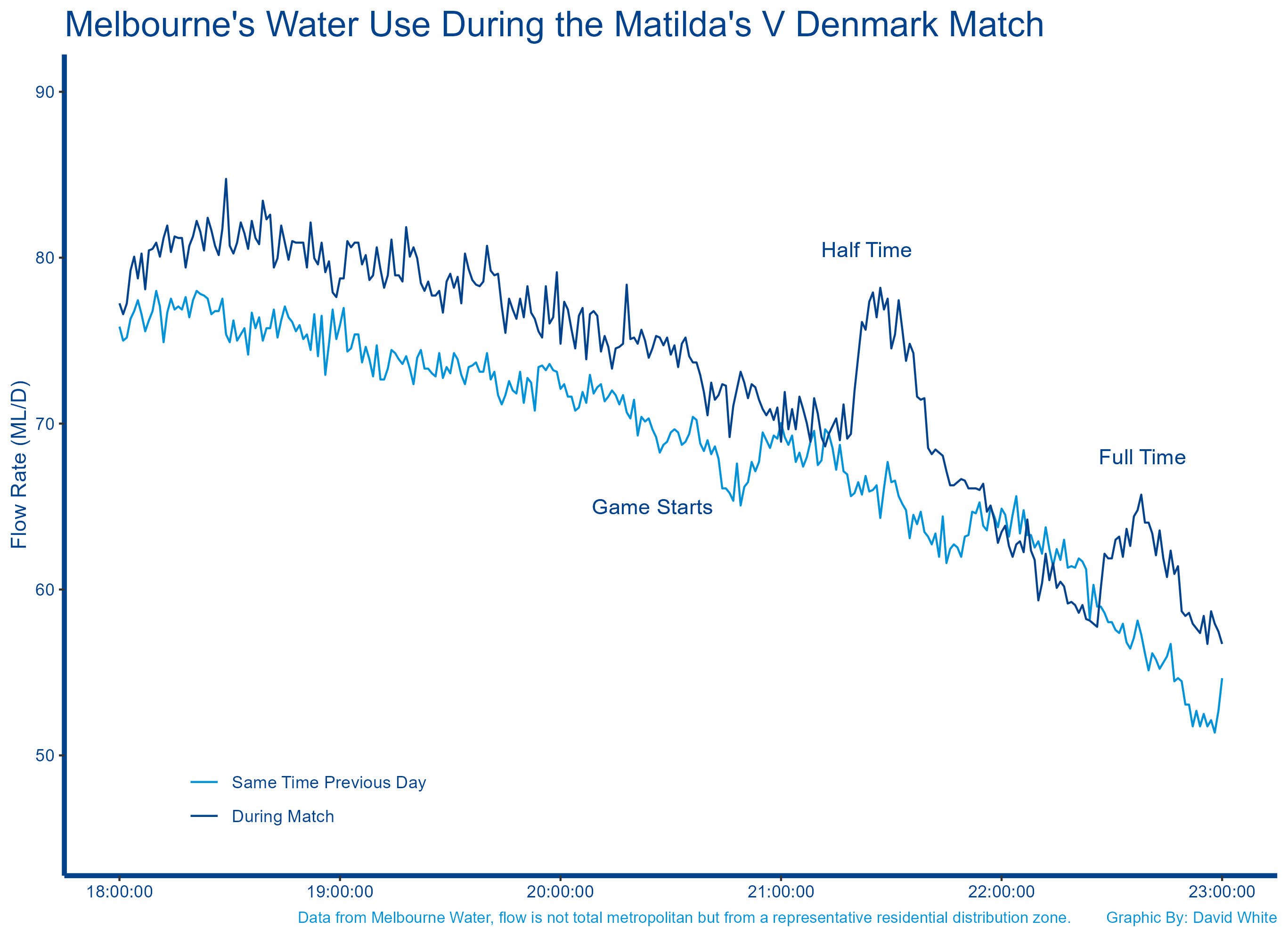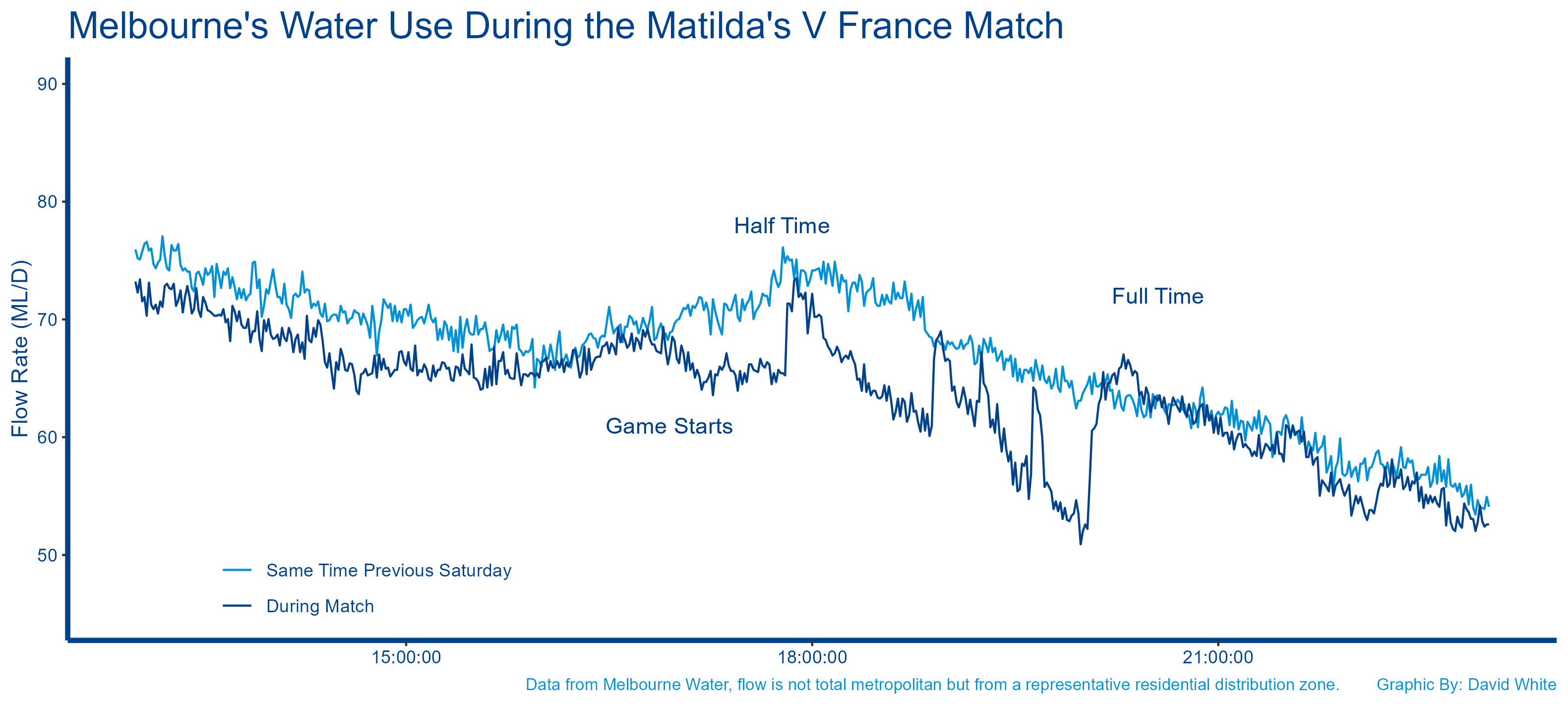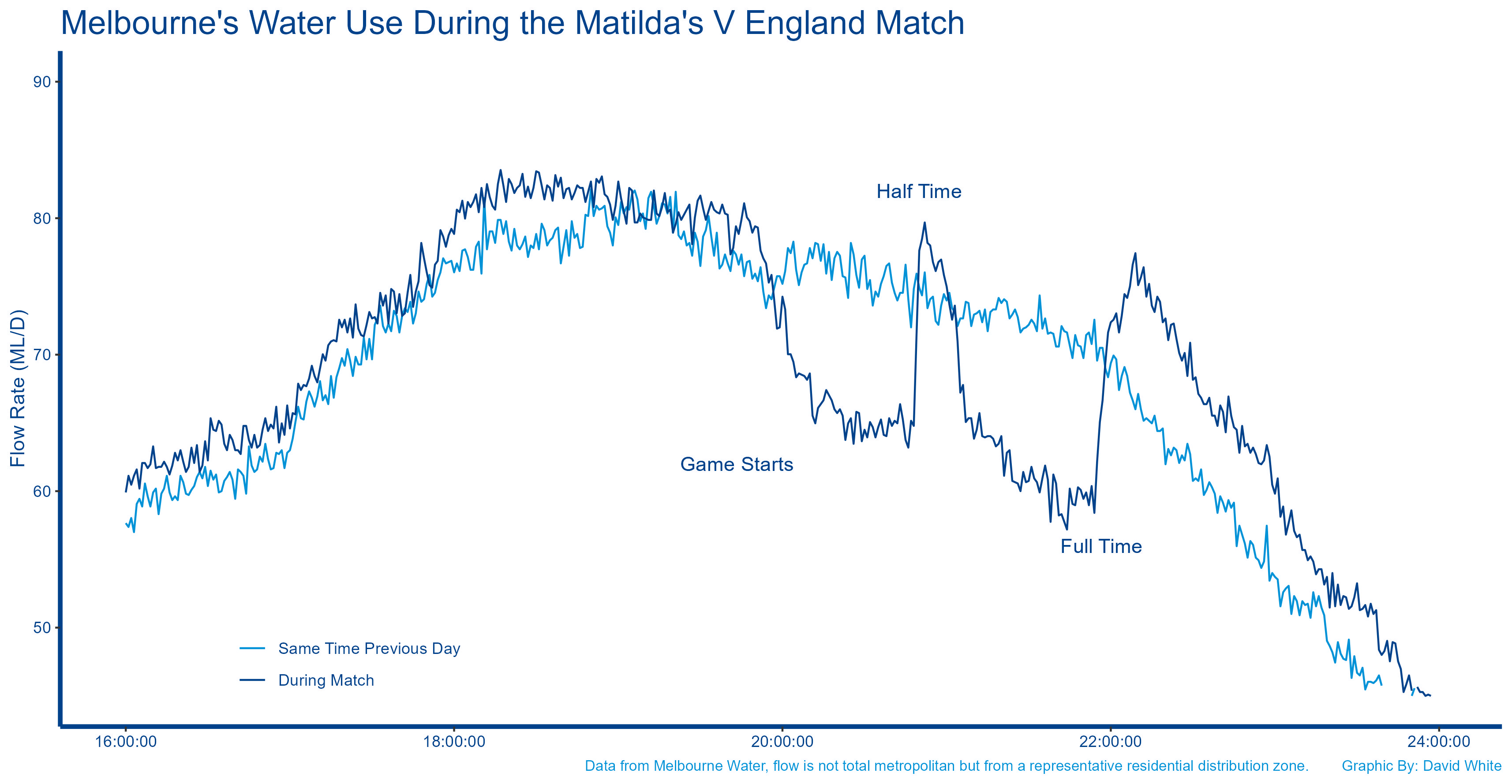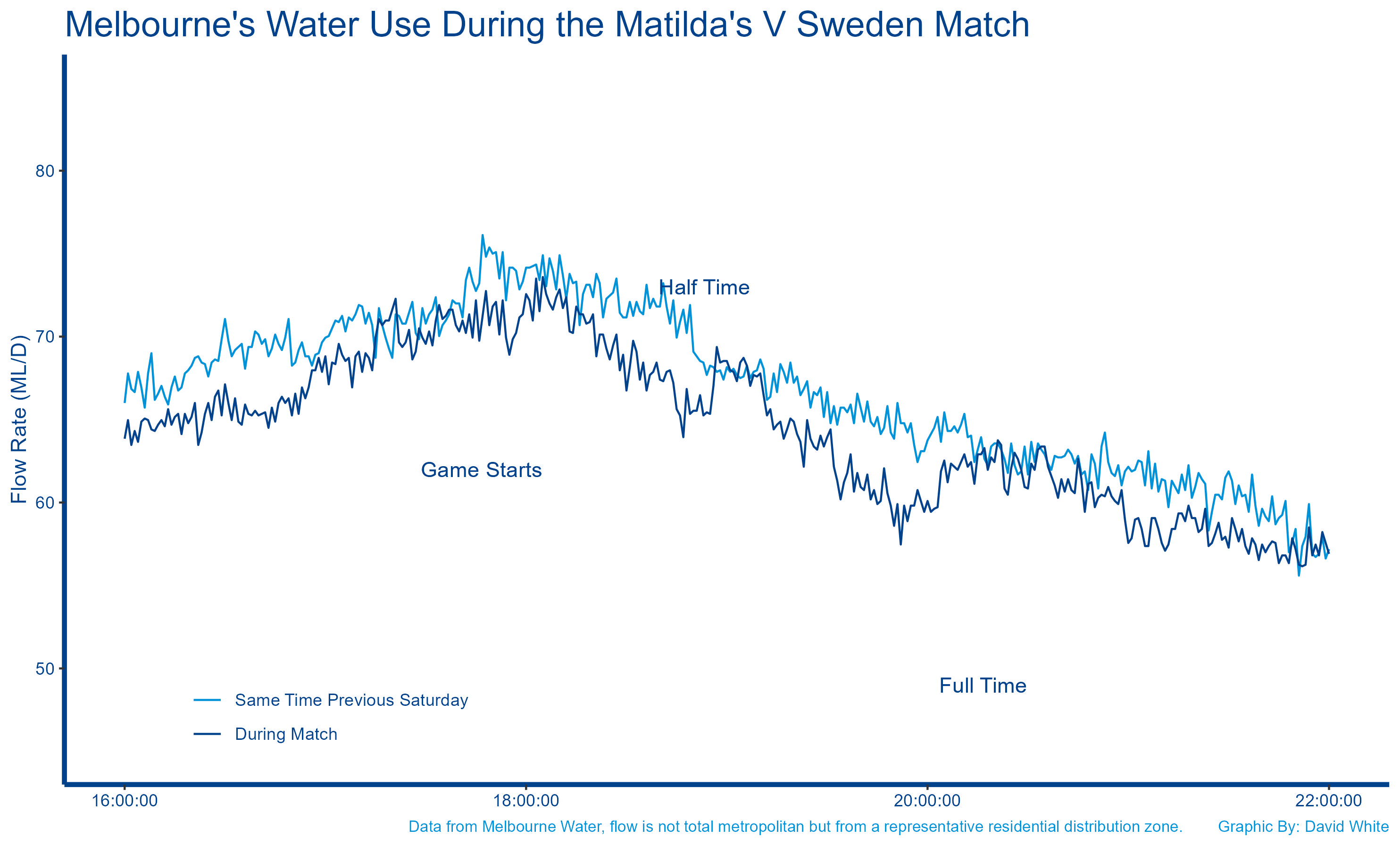
Matildas World Cup Flush Factor shows we didn’t want to miss a moment
The Matildas’ epic FIFA World Cup campaign had viewers glued to their seat for every thrilling minute, with Melbourne Water analysis showing Melburnians held off on loo breaks during play and until matches were over.
Melbourne Water’s unique ‘Flush Factor’ looks at patterns in total water use from mass toilet flushings during breaks in play during live televised sporting events.
It’s been telling during the FIFA Women’s World Cup tournament, as record numbers of viewers tuned in during Australia’s matches against Denmark, France, England and Sweden over recent weeks.
A good indicator of how compelling a match is, the flush factor was developed by Water Operations Lead David White and compares usual water consumption throughout the year to that seen during events such as AFL Grand Finals.
For the first time this year the flush factor was applied to the world game, analysing water use during the Matildas matches against Denmark, France, England and Saturday’s game against Sweden.
During Australia’s win over Denmark on August 7 there was a 13 per cent increase in water flow during half time, and 10 per cent after the match.

The nail-biting penalty shootout with France on August 12 also saw people hold off on toilet breaks en-masse until the moments after Cortnee Vine secured Australia’s pathway to the final four.

“While some people snuck in a quick break in between extra time and the shootout, it was the moments after Australia claimed the win against France that saw the big jump in water use, it was up 28 per cent,” Mr White said.
There was a 27 per cent spike as Melburnians took advantage of the half time break when the Matildas took on England on August 16, but Mr White said the biggest mass flush occurred just after Australia’s heartbreaking loss in that match.

“We saw the biggest spike right at the end of the England match, with water use up 33 per cent – so Melburnians certainly hadn’t given up supporting the Matildas at the end despite the difference in scores,” Mr White said.
It wasn’t the fairytale finish Australians had hoped for, and while many still tuned in to watch the Matildas take on Sweden in the playoff for third at the earlier start time on Saturday night, water use largely followed usual patterns. However, there was strong interest in Sunday night’s Final between England and Spain with water use up 18 per cent at match’s end.

The results reflect similar patterns to those seen during the most gripping of recent AFL Grand Finals, with the closest-fought matches seeing the biggest spikes during quarter and half-time breaks and immediately post-match.
The drought-breaking 2016 win by the Western Bulldogs over Sydney saw the highest ever spikes in water usage during an AFL Grand Final in recent years, with a 101 per cent change in flow levels recorded at the end of the match compared to a normal Saturday afternoon.
For media enquiries, please contact:
[email protected]
03 9679 7004



